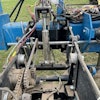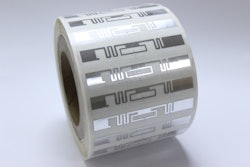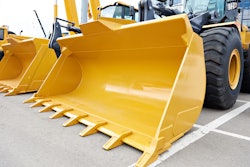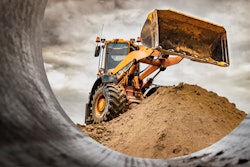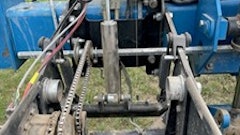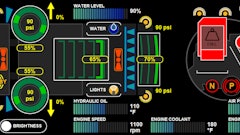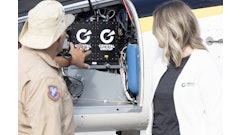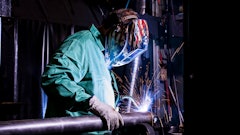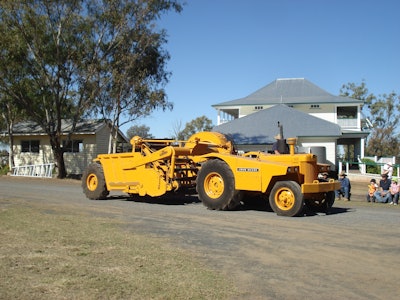
The first elevating scraper was introduced in the 1920s by Highway Trailer Company for use behind a crawler tractor. The idea was well ahead of its time and was apparently unsuccessful.
John Eugene “Gene” Hancock understood the elevating scraper’s potential for low-cost handling of suitable materials. The last cubic yard of material loaded as easily as the first as the elevator flight swept it up the front of the load, requiring less horsepower.
His first models, introduced in the late 1940s, were small machines designed for agricultural and soil conservation use behind wheel tractors. They were set up like pull scrapers, riding on a front dolly; larger models for construction were yoked directly to the tractor. The elevator was powered by a line of drive shafts connected by universal joints that would fail if the tractor and scraper was turned carelessly.
These early models dumped by the bowl, splitting open perpendicular to the direction of travel. Some materials would not leave the bowl, and one farmer who got tired of shoveling clogged material out patented a system whereby the scraper bowl was pulled backwards on rollers as an ejection ram shoved the load forward. Hancock acquired the patent circa 1957-1958.
Hancock partnered with John Deere, offering its scrapers for Deere 80, 820 and 840 wheel tractors until Deere introduced its own elevating scraper in 1960. Undeterred, Hancock ended the agreements and began working with LeTourneau-Westinghouse and, eventually, Euclid, Allis-Chalmers, M. R. S. and F. W. D. Wagner. Meanwhile, Caterpillar partnered with Hancock competitor Johnson Manufacturing Company.
Hancock was acquired by Clark Equipment Company in 1966, and Hancock’s plant was closed in 1982.
__________________________
Thomas Berry is an archivist and editor with the Historical Construction Equipment Association (HCEA). HCEA is a 501(c)3 nonprofit organization dedicated to preserving the history of the construction, dredging and surface mining equipment industries. With over 3,500 members in a dozen countries, its activities include operation of the National Equipment Museum and archives in Bowling Green, Ohio; publication of a quarterly magazine Equipment Echoes, from which this text is adapted, and hosting an annual working exhibition of restored construction equipment. Individual memberships are $45 within the USA and Canada, and $65 elsewhere. HCEA’s next International Convention and Old Equipment Exhibition will be held Aug. 5-8, 2024, in Canandaigua, New York. HCEA seeks to develop relationships in the equipment manufacturing industry, and offers a college scholarship for engineering students. Information is available at hcea.net, or by calling 419-352-5616 or emailing [email protected]


